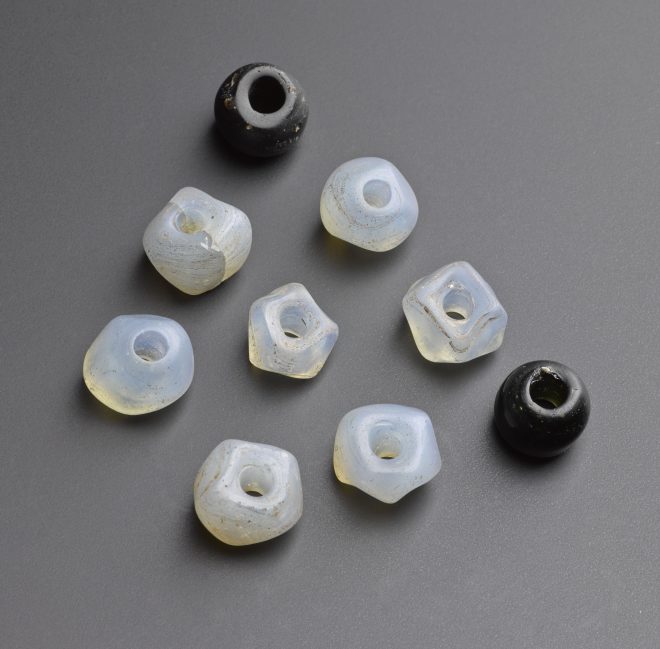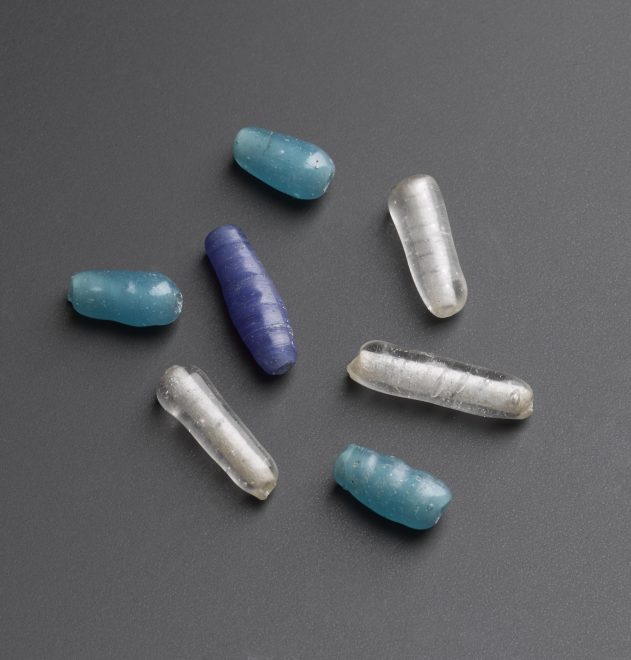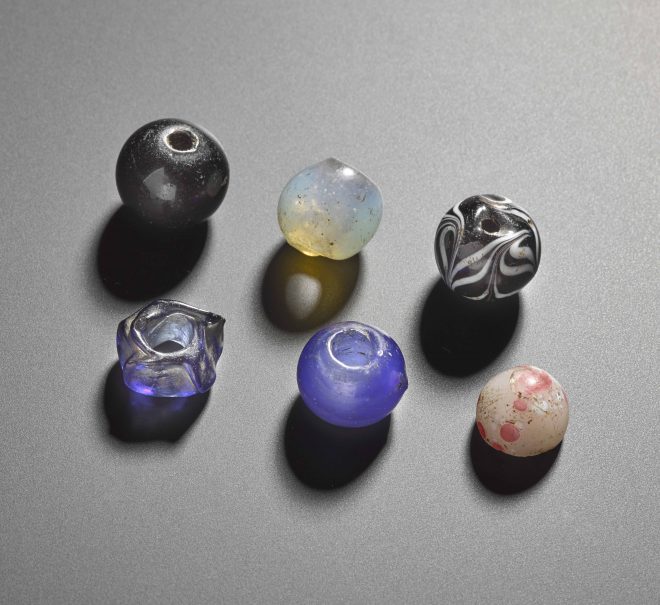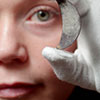I’m delighted that an article written in collaboration with Dr Susy Kirk, on St Andrew’s Day, been awarded the RBK Stevenson prize by the Society of Antiquaries of Scotland. Here is a flavour of the research behind the prize.
When are glass beads from a Pictish site not Pictish? When they’re early modern, that’s when. But how can you tell?
It might seem straightforward. Excavations at St Ninian’s Isle on Shetland unearthed one of the star finds to survive from early medieval Scotland – a hoard of 8th-century Pictish silver brooches, bowls and weapon fittings. The discovery of this hoard by a schoolboy on his first archaeological excavation is a fantastic story. But this silver treasure trove is not the only archaeological evidence from the site, far from it.
Amongst the excavation assemblage are two collections of glass beads. So you’d think they’d also be early medieval, right? Or take Morham in East Lothian, where a piece of 8th-century Anglo-Saxon stone sculpture was found at a church. Two strings of glass beads are known from there too, found in the early 20th century, perhaps within a stone-lined burial in the graveyard. They are also likely to be over a thousand years old as well, aren’t they?

Although both of these sites were important during the early medieval period, both are also places with a long and rich history. And although early medieval sites do sometimes yield glass beads, none look quite like the beads from St Ninian’s Isle or Morham. So how and when were they made?
There are several different ways of making glass beads, but the simplest is to melt ready-made glass and wind it around a metal rod. The beads made using this technique, sometimes called lamp-working, often have spirals at the perforated ends, and sometimes you can even see ‘nipped’ ends where the soft glass has been cut. A lot of the beads from St Ninian’s Isle and Morham are clearly made by this winding technique, and some of them are pretty uneven. But although people have been making beads this way for a very long time, don’t be fooled into thinking that their uneven shape necessarily means they are ancient.

Similar shapes and colours of beads have been found in 17th–19th century archaeological contexts in Scotland and from much wider afield, and looking for these parallels is the first step in identifying the Morham and St Ninian’s Isle beads. But given the archaeological credentials of both sites, how can we be sure the beads are really so recent? Analysing the composition of the glass can be really useful, if you’re lucky enough to have someone with the skills that Dr Susy Kirk does. She undertook non-destructive, surface analysis of the beads from Morham and St Ninian’s Isle, together with a range of other similar beads from Scotland.
While there can be issues interpreting surface analysis of glass, with the right knowledge it is possible to ask questions about both the type of glass and the specific ingredients that were added to it to give its colour or to make it translucent or opaque.

There are different types of glass (such as potash glass, soda-lime-silica glass, and leaded glass) and some have only been used at specific times and places. When you combine the type of glass with its colour you can sometimes narrow the field further. For example, one of the groups from Morham is made from leaded glass. Some of these leaded glass beads are entirely colourless, and this is a relatively recent technological advancement, suggesting that the beads were probably made in the 17th–18th century.
Susy’s analysis also suggested that some of the beads were made using refined materials, another post-medieval development. And some are made from a special opalescent glass that can appear either bluish or yellowish depending on the light. These contained arsenic and although arsenic might be found naturally in blue beads coloured with cobalt, in other colours it is most likely to be a deliberately added fining agent, used from at least the early 19th century.
So, the beads from Morham and St Ninian’s Isle are very likely to have been made after 1600 and perhaps as late as the 19th century. And on balance this should not be that surprising. In 1764, Venetian glass-makers produced 44,000 pounds of glass beads a week. And that was just in Venice – there were other prolific glass-making centres in Bohemia, Holland and France as well as smaller-scale production in England, Spain, Germany and Belgium. It is estimated that Venetian glass-makers manufactured over a hundred thousand different varieties of bead in almost every combination of colours and designs.
These beads, often called ‘trade beads’ were shipped around Europe and taken in vast quantities by explorers and missionaries to non-European peoples around the world. While there has been a substantial amount of research on the beads found at North American sites, their manufacture and circulation within Europe is less well understood.

This means that there was a massive early modern glass industry producing a startling array of types of beads that were traded and exchanged across the globe after passing through multiple hands. This complicates working with archaeological finds of glass beads. Although both St Ninian’s Isle and Morham are sites with good early medieval credentials, they were also places where people continued to visit, use and bury their dead. Excavations at St Ninian’s Isle also found 16th–17th century pottery and a worn Limoges enamel fragment suggesting links across the North Sea, while excavations at Morham found pottery and clay pipes that may also be continental imports. St Ninian’s Isle and a site opposite it on Shetland Mainland have both been identified as trading sites in the 17th century. Although the chapel at St Ninian’s Isle was demolished in 1774, people continued to bury their dead there until around 1840; church sites are always likely to have long lives, even beyond their formal use for worship or burial.
So in some ways this is a cautionary tale. The sheer number of glass beads made since 1600 means that the chances are that stray glass beads or even beads from disturbed archaeological contexts are likely to be post-medieval objects. Glass beads have not always had the attention they deserve from archaeologists – partly because it is so difficult to be sure of their date without (and sometimes with) scientific analysis. But these trade beads have the potential to tell us about a burgeoning post-medieval trade in affordable personal objects in Scotland and across Europe, and as such they are important objects in their own right.
This is a summary of the paper published in the Proceedings of the Society of Antiquaries, volume 145. The full paper is available to Fellows of the Society online.
Thanks to Susy Kirk for allowing me to summarise our collaborative research here, and thanks to Jenny Murray at Shetland Museum and Archives for facilitating a research loan of the St Ninian’s Isle beads.
The Glenmorangie Research Project aims to extend our understanding of Scotland’s Early Medieval past and was established in 2008 following a partnership between National Museums Scotland and The Glenmorangie Company. The current phase of research, Scotland’s Earliest Silver: power, prestige and politics, will look at the biography of this precious metal as it was used and reused in Early Medieval Scotland.
